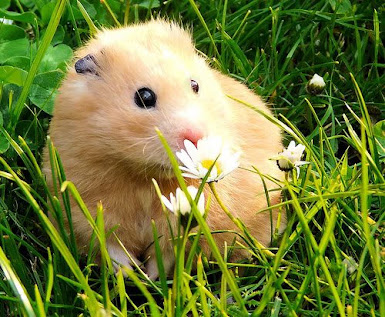How to Care for Hamsters?
Hamsters are a very common domestic animal. These little rodents usually live about two years and are best kept alone. There are many different breeds of hamsters, varying in size and characteristics. To purchase the appropriate size cage and equipment, research the breed you are keeping and its overall size. Hamsters are nocturnal by nature, so be prepared for nocturnal noises and make sure the animal cage is in the right place for you and your pet.
Before You Begin
Before you buy your pet, make sure you have a home for him or her to help reduce the stress of adjusting to a new home. Hamsters have special needs. They need exercise, mental stimulation, and an airy cage with a hiding place. They also need a varied diet that includes both commercial and fresh foods. Make sure you know what your new pet can (and cannot) eat.
What You Will Need
You will need to purchase the necessary supplies for your hamster, such as
Cage
Bedding and nesting material
Food
Food bowl
Water bottle
Bike
Home or hideaway
Toys
Choosing an appropriate hamster cage
Buy a hamster cage that is appropriate for your hamster's size, escape-proof, and easy to clean. Modular tube cages are fun but can be difficult to clean and poorly ventilated (and the tubes may be too small for some Syrian hamsters). Do not underestimate a hamster's ability to escape. They can get into some pretty tight spaces, and they can chew through plastic walls surprisingly quickly.
When buying a Syrian hamster, remember that many hamster cages are small. If you are buying a dwarf hamster, remember that they can often pass through the bars of a medium-sized hamster cage. Hamster cages should be completely cleaned once a week. Once the cage has been cleaned, remove the hamster safely from the cage and place it in a safe place.
Fill the Cage with Bedding and Nesting Material for the Hamster
Avoid using cedar or pine shavings as bedding material for hamsters. Their odor irritates the hamster's respiratory system. Hamsters prefer nests for bedding.
Cotton nesting material sold in pet stores is unnecessary and can cause problems if eaten or wrapped around the pony's toes. Shredded toilet paper or tissue is excellent nesting material and is cost-effective. The bedding can be neatly replaced during weekly cage cleaning.
Select Hamster Food and Dishes
Hamster food should be of good quality. Pellet food provides a better balance of nutrients than bulk mixes and is better suited for many hamsters. With bulk foods (such as seeds), hamsters may choose what they like and leave out what they don't like, which can lead to nutritional imbalances and hamsters becoming overweight. This can lead to nutritional imbalance and overweight hamsters. Pellet mixes can be supplemented with a variety of products, including fresh vegetables. Hamsters should be fed once a day. Remove any raw food that has not been eaten for several hours.
Ideally, hamster food bowls should be shallow and small but heavy (not easily tipped over). Small ceramic or porcelain bowls are excellent choices because they are sturdy and cannot be chewed. You don't have to buy a dish specifically for your hamster, but make sure the dish you choose is chew-proof the next day.
Provide Options for Use
Hamsters love to run and need exercise, so get an exercise bike that is as large and of good quality as possible. It should have a hard surface to run on and no cross supports (which could snag on their legs or neck). Look for one that can be mounted on the side of the cage. Hamsters run at night, so choose a quiet bicycle as well. A small amount of vegetable oil on the bicycle axle will help keep it quiet.
In addition to wheels, hamsters need a variety of other things to chew on and climb on. Hamsters need lots of stimulation and exercise or they will get bored. A tired hamster will try to chew on anything and may run away. Pet stores have many hamster-safe products, and you can even make toilet paper tubes and tissue boxes out of hamster toys.
Consider Purchasing a Hamster House or Hideaway
Hamsters appreciate having their own private place to sleep. Hiding places can be as simple as a small cardboard box (which needs to be replaced often but is inexpensive), a plastic hiding place (which can get chewed on), a wooden box (which can get chewed on, dirty, and smelly), or half a coconut shell.



Comments
Post a Comment